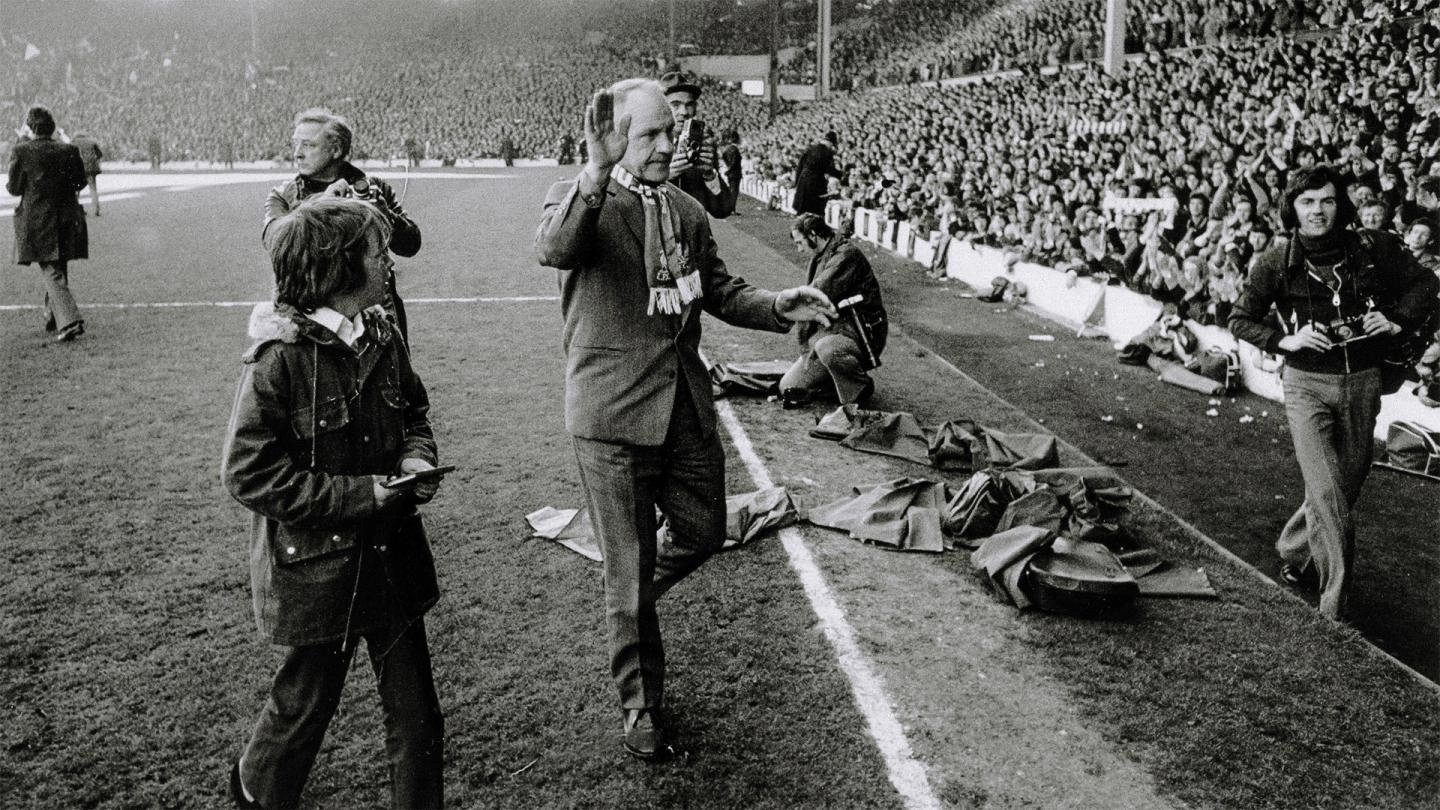FeatureFive more stories from 'Shankly's Second Coming' documentary
The 1972-73 season will go down as one of the most memorable, and most significant, in Liverpool’s history.
Bill Shankly’s Reds ended a period of seven years without a trophy in stunning fashion, securing not only the league championship but also the club’s first ever European trophy, beating Borussia Monchengladbach to win the UEFA Cup.
Fifty years on, the story of Shankly’s second great side has been retold in a brand-new LFC Original. Shankly’s Second Coming is available on demand on LFCTV GO now, and features recollections from players and supporters alongside brilliant archive footage.
- Black Friday offer – Get 50% off an annual subscription to LFCTV GO here. Use code 50OFFGO. Available online and via iOS app only. Ends November 28
Here are five more fascinating stories from the film…
Watford shocker changes everything
For many people, Liverpool’s growth into a dominant force at home and abroad in the 1970s can be traced back to a shock FA Cup quarter-final defeat by Watford in February 1970.
“We were appalling,” says Brian Reade of the Reds’ 1-0 loss at Vicarage Road. “That was the day when we realised that this team was gone.”
Ian Callaghan remembers reporting for training on the Monday and being told there was to be a practice game away to Blackburn Rovers.
“He changed the team like I don’t know what,” Callaghan says. “Players were dropped after the Watford game. It was like a new era.”
Callaghan would be one of those to survive the cull, but within 12 months the likes of Roger Hunt, Ian St John, Tommy Lawrence and Ron Yeats had either left or been phased out, with Ray Clemence, John Toshack, Emlyn Hughes and Larry Lloyd emerging as new mainstays for Shankly.
Keegan the catalyst
Liverpool were left disappointed after losing the FA Cup final to Arsenal at the end of the 1970-71 season, but that summer they made a signing that would help take them to the next level.
“Half the world is short on natural enthusiasm,” says Shankly in the film. “But Kevin Keegan isn’t. And that, plus his ability, makes him a player.”
Keegan joined from Scunthorpe United for just £33,000, and would go on to become one of the club’s all-time greats.
“He was the next superstar after George Best,” details Callaghan. “He came to Liverpool and he was just phenomenal.”
Liverpool narrowly missed out on the league title in 1971-72, denied in controversial fashion in the final game of the campaign at Arsenal, but with Keegan on board it was clear that success was not far away.
“You felt something was happening, because he had a burning desire to succeed,” Phil Thompson says. “He wanted to win trophies.”
The final piece of the jigsaw
It took a stroke of luck for Shankly to find the player who would help Liverpool regain their league crown.
In the summer of 1972, the Reds had been set to sign Frank Worthington from Huddersfield Town, only for the move to break down when the maverick forward failed a medical.
Unperturbed, Shankly would instead bring in attacking midfielder Peter Cormack from Nottingham Forest, in what would prove to be a masterstroke.
“Shankly described him as the final piece of the jigsaw and I can see why,” remembers Reade. “He was a bit of a Bobby Firmino player, for me.”
Thompson agrees. “Peter was an absolutely terrific player,” he says. “Twinkle toes, we called him. He was always on his tiptoes. Fantastic at getting into the box late.”
Cormack would go on to score 10 goals in his first season on Merseyside, including vital strikes against Everton and title rivals Leeds United.
The final piece of the jigsaw, indeed.
Thommo gets the nod
Liverpool clinched the league title with a goalless draw against Leicester City at Anfield on April 28, 1973, a date that Thompson will always remember.
Still an apprentice, that week he had helped turn down seats at Anfield, creating a mosaic reading ‘Lpool FC League Champs’.
Come matchday, and with more than 56,000 fans packed inside the stadium, Thompson was named in the starting XI.
“Brian Hall was sub,” he recalls. “He was furious! I was still a kid, still a fan. I apologised to Brian.”
A goalless draw was enough to give Liverpool the title, with a red-shirted Shankly providing a number of iconic images during the subsequent celebrations.
“Definitely the greatest moment I had in football,” he would later say.
Glory in Germany
With the title wrapped up, Liverpool’s final challenge was to end the club’s wait for a European trophy.
Monchengladbach, with stars such as Gunter Netzer, Jupp Heynckes and Berti Vogts, stood in their way, with Shankly showing off his sharpness after the first leg of the final at Anfield was washed out due to torrential rain.
“He noticed that they couldn’t defend balls into the box,” explains Thompson. That night, Shankly took John Toshack, who had been named as a substitute for the original game, to one side.
“I said to John, ‘You go home and get to bed… get ready for tomorrow night.’”
With Toshack restored to the starting XI, Liverpool won the first leg 3-0, but the return game in Gladbach, 13 days later, would be a nervous one, with the Germans racing into a 2-0 lead and Liverpool clinging on thereafter.
“It was the longest half I’ve ever had to listen to on the radio,” remembers Reade.
“It felt like we’d run 100 miles,” adds supporter Linda Clark, who was in the stadium.
Liverpool held on, just, to complete one of the most memorable of seasons.
“That was the beginning of the modern Liverpool FC, I think,” supporter Jegsy Dodd says. “Then we went on and dominated everything.”
- Watch Shankly's Second Coming in full on LFCTV GO now.
